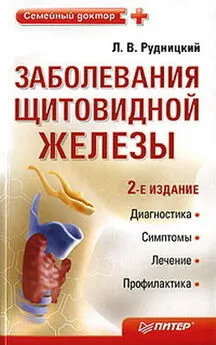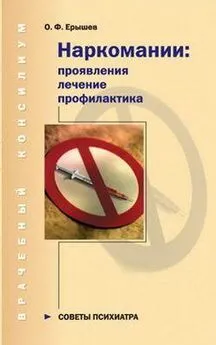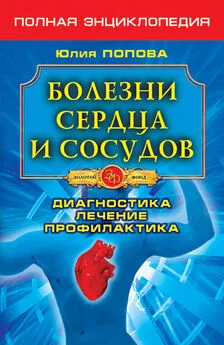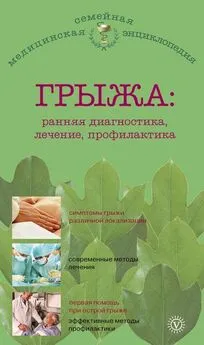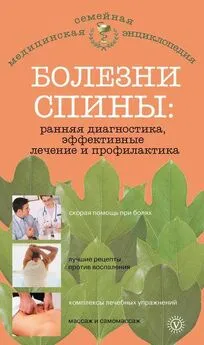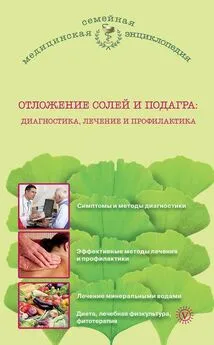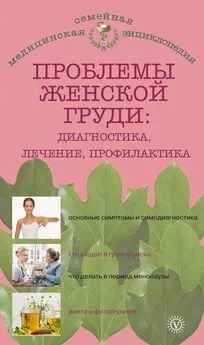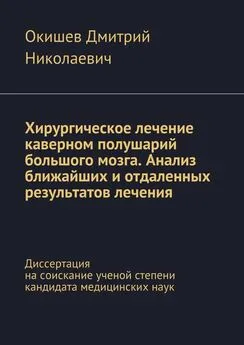Владимир Мартынов - СИБР (хирургическое лечение и профилактика)
- Название:СИБР (хирургическое лечение и профилактика)
- Автор:
- Жанр:
- Издательство:Литагент Литео
- Год:неизвестен
- ISBN:9785000717202
- Рейтинг:
- Избранное:Добавить в избранное
-
Отзывы:
-
Ваша оценка:
Владимир Мартынов - СИБР (хирургическое лечение и профилактика) краткое содержание
СИБР (хирургическое лечение и профилактика) - читать онлайн бесплатно ознакомительный отрывок
Интервал:
Закладка:
165. Barnes, M. J. Regulatory T cells reinforce intestinal homeostasis M. J. Barnes, F. Powrie // Immunity. – 2009. – № 31. – P. 401–411.
166. Lee, Y. K. Has the microbiota played a critical role in the evolution of the adaptive immune system? / Y. K. Lee, S. K. Mazmanian // Science. – 2010. – № 330. – P. 1768–1773.
167. Josefowicz, S. Z. Extrathymically generated regulatory T cells control mucosal TH2 inflammation / S. Z. Josefowicz, R. E. Niec, H. Y. Kim et al. // Nature. – 2012. – № 482. – P. 395–399.
168. Round, J. L. The gut microbiota shapes intestinal immune responses during health and disease / J. L. Round, S. K. Mazmanian // Nat. Rev. Immunol. – 2009. – № 9. – P. 313–323.
169. Round, J. L. Inducible Foxp 3+ regulatory T-cell development by a commensal bacterium of the intestinal microbiota / J. L. Round, S. K. Mazmanian // Proc. Natl. Acad. Sci USA. – 2010. – № 107. – P. 12204–12209.
170. O’Mahony, C. Commensal-induced regulatory T cells mediate protection against pathogen-stimulated NF-jB activation / C. O’Mahony, P. Scully, D. O’Mahony et al. // PLoS Pathog. – 2008. – № 4. – P. 1000– 1012.
171. Atarashi K, Tanoue T, Shima Tet al. Induction of colonic regulatory T cells by indigenousClostridiumspecies.Science2011; № 331:337–41.
172. Ivanov, I. I. Induction of intestinal Th17 cells by segmented filamentous bacteria / K. Atarashi, T. Tanoue, T. Shima et al. // Cell. – 2009. – № 139. – P. 485–498.
173. Atarashi, K. ATP drives lamina propria TH17 cell differentiation / K. Atarashi, J. Nishimura, T. Shima et al. // Nature. – 2008. – № 455. – P. 808–812.
174. Fukuda, S. Bifidobacteria can protect from enteropathogenic infection through production of acetate / S. Fukuda, H. Toh, K. Hase et al. // Nature. – 2011. – № 469. – P. 543–547.
175. Wong, J. M. Colonic health: fermentation and short chain fatty acids / J. M. Wong, R. de Souza, C. W. Kendall // J. Clin. Gastroenterol. – 2006. – № 40. – P. 235–243.
176. Maslowski, K. M. Regulation of inflammatory responses by gut microbiota and chemoattractant receptor GPR43 / K. M. Maslowski, A. T. Vieira, A. Ng et al. // Nature. – 2009. – № 461. – P. 1282– 1286.
177. Barthel, M. Pretreatment of mice with streptomycin provides a Salmonella entericaserovar Typhimurium colitis model that allows analysis of both pathogen and host / M. Barthel, S. Hapfelmeier, L. Quintanilla-Martinez et al. // Infect. Immun. – 2003. – № 71. – P. 2839–2858.
178. Higgins, L. M. Role of bacterial intimin in colonic hyperplasia and inflammation / L. M. Higgins, G. Frankel, I. Connerton et al. // Science. – 1999. – № 285. – P. 588–591.
179. Geddes, K. Identification of an innate T helper type 17 response to intestinal bacterial pathogens / K. Geddes, S. J. Rubino, J. G. Magalhaes // Get. al Nat. Med. – 2011. – № 17. – P. 837– 844.
180. Lee, S. J. Temporal expression of bacterial proteins instructs host CD4 T cell expansion and Th17 development / S. J. Lee, J. B. McLachlan, J. R. Kurtz // PLoS Pathog. – 2012. – № 8. – P. 102–119.
181. Broz, P. Molecular mechanisms of inflammasome activation during microbial. infections / P. Broz, D. M. Monack / Immunol. Rev. 2011. – № 243. – P. 174–190.
182. Lupp, C. Host-mediated inflammation disrupts the intestinal microbiota and promotes the overgrowth of Enterobacteriaceae / C. Lupp, M. L. Robertson, M. E. Wickham et al. // Cell. Host. Microbe. – 2007. – № 2. – P. 119–129.
183. Stecher, B. Salmonella enterica serovar typhimurium exploits inflammation to compete with the intestinal microbiota / B. Stecher, R. Robbiani, A. W. Walker et al. // PLoS Biol. – 2007. – № 5. – P. 2177–2189.
184. Finlay, B. B. Salmonellav interactions with host cells: in vitro to in vivo / B. B. Finlay, J. H. Brumell // Philos. Trans R. Soc. Lond. Biol. Sci. – 2000. – № 355. – P. 623–631.
185. Raffatellu, M. Lipocalin-2 resistance confers an advantage to Salmonella enterica serotype Typhimurium for growth and survival in the inflamed intestine / M. Raffatellu, M. D. George, Y. Akiyama et al. // Cell. Host. Microbe. – 2009. – № 5. – P. 476–486.
186. Stelter, C. Salmonellainduced mucosal lectin RegIIIbkills competing gut microbiota / C. Stelter, R. Kappeli, C. Konig et al. // PLoS ONE. – 2011. – № 6. – P. 207–249.
187. Liu, J. Z. Zinc sequestration by the neutrophil protein calprotectin enhances salmonella growth in the inflamed gut / J. Z. Liu, S. Jellbauer, A. J. Poe et al. // Cell. Host. Microbe. – 2012. – № 11. – P. 227–239.
188. Thiennimitr, P. Intestinal inflammation allows Salmonella to use ethanolamine to compete with the microbiota / P. Thiennimitr, S. E. Winter, M. G. Winter et al. // Proc. Natl. Acad. Sci. USA. – 2011. – № 108. – P. 174–185.
189. Winter, S. E. Gut inflammation provides a respiratory electron acceptor forSalmonella / S. E. Winter, P. Thiennimitr, M. G. Winter et al. // Nature. – 2010. – № 467. – P. 426–429.
190. Lawley, T. D. Host transmission ofSalmonella entericaserovar Typhimurium is controlled by virulence factors and indigenous intestinal microbiota / T. D. Lawley, D. M. Bouley, Y. E. Hoy et al. // Infect. Immun. – 2008. – № 76. – P. 403–416.
191. Wickham, M. E. Virulence is positively selected by transmission success between mammalian hosts / M. E. Wickham, N. F. Brown, E. C. Boyle et al. // Curr. Biol. – 2007. – № 17. – P. 783–788.
192. Antonopoulos, D. A. Reproducible community dynamics of the gastrointestinal microbiota following antibiotic perturbation / D. A. Antonopoulos, S. M. Huse, H. G. Morrison // Infect. Immun. – 2009. – № 77. – P. 2367–2375.
193. Brandl, K. Vancomycin-resistant enterococci exploit antibiotic-induced innate immune deficits / K. Brandl, G. Plitas, C. N. Mihu et al. // Nature. – 2008. – № 455. – P. 804–807.
194. Bartlett, JG. Narrative review: the new epidemic of Clostridium difficile-associated enteric disease / J. G. Bartlett // Ann. Intern. Med. – 2006. – № 145. – P. 758–764.
195. Rupnik, M. Clostridium difficileinfection: new developments in epidemiology and pathogenesis / M. Rupnik, M. H. Wilcox, D. N. Gerding // Nat. Rev. Microbiol. – 2009. – № 7. – P. 526–536.
196. Shen A. Clostridium difficiletoxins: mediators of inflammation? / A. Shen // J. Innate Immun. – 2012. – № 4. – P. 149–158.
197. Lamont, J. T. How bacterial enterotoxins work: insights from in vivo studies / J. T. Lamont, E. Theodore, A. Woodward // Trans. Am. Clin. Climatol. Assoc. – 2002. – № 113. – P. 167–180; discussion 80–1.
198. Buffie, C. G. Profound alterations of intestinal microbiota following a single dose of clindamycin results in sustained susceptibility to Clostridium difficile-induced colitis / C. G. Buffie, I. Jarchum, M. Equinda et al. // Infect. Immun. – 2012. – № 80. – P. 62–73.
199. Chang, J. Y. Decreased diversity of the fecal Microbiome in recurrent Clostridium difficile-associated diarrhea / J. Y. Chang, D. A. Antonopoulos, A. Kalra et al. // J. Infect. Dis. – 2008. – № 197. – P. 435–438
200. Lawley, T. D. Antibiotic treatment ofClostridium difficilecarrier mice triggers a supershedder state, spore-mediated transmission, and severe disease in immunocompromised hosts / T. D. Lawley, S. Clare, A. W. Walker et al. // Infect. Immun. – 2009. – № 77. – P. 3661–3669.
201. Lawley, T. D. Proteomic and genomic characterization of highly infectiousClostridium difficile630 spores / T. D. Lawley, N. J. Croucher, L. Yu et al. // J. Bacteriol. – 2009. – № 191. – P. 5377– 5386.
202. Bartlett, JG. Clinical practice. Antibiotic-associated diarrhea / J. G. Bartlett // N. Engl. J. Med. – 2002. – № 346. – P. 334–339.
203. Moore, SR. Update on prolonged and persistent diarrhea in children / S. R. Moore // Curr. Opin. Gastroenterol. – 2011. – № 27. – P. 19–23.
204. Cooper, M. A. Fix the antibiotics pipeline / M. A. Cooper, D. Shlaes // Nature. – 2011. – № 472. – P. 32.
205. Bron, P. A. Emerging molecular insights into the interaction between probiotics and the host intestinal mucosa / P. A. Bron, P. van Baarlen, M. Kleerebezem // Nat. Rev. Microbiol. – 2012. – № 10. – P. 66–78.
206. Maukonen, J. Intra-individual diversity and similarity of salivary and faecal microbiota / J. Maukonen, J. Matto, M. L. Suihko // J. Med. Microbiol. – 2008. – № 12. – P. 1560–1568.
207. Dethlefsen, L. Assembly of the human intestinal microbiota / L. Dethlefsen, P. B. Eckburg, E. M. Bik // Trends Ecol. Evol. – 2006. – № 21. – P. 517–523.
208. Cummings, J. H. The control and consequences of bacterial fermentation in the human colon / J. H. Cummings, G. T. Macfarlane // J. Appl. Bacteriol. – 1991. – № 70. – P. 443–459.
209. Маевская, Е. А. Синдром избыточного бактериального роста в тонкой кишке: от последних научных данных к рутинной практике / Е. А. Маевская, С. В. Черемушкин, Н. А. Кривобородов, Ю. А. Кучерявый // Клиничексие перспективы гастроэнтерологии, гепатологии. – 2013. – № 5. – С. 29–40.
210. Wei, Z. Alterations of the gut microbiome and metabolome in alcoholic liver disease / Z. Wei, Z. Zhanxiang // World. J. Gastrointest. Pathophysiol. – 2014. – Vol. 5 (4). – P. 514–522.
211. Rawls, J. F. Special issue: gut microbial communities in health and disease / J. F. Rawls // Gut. Microbes. – 2012. – Vol. 3 (4). – P. 277–278.
212. Iebba, V. Gut microbiota and the immune system: an intimate partnership in health and disease / V. Iebba, M. Nicoletti, S. Schippa // Int. J. Immunopathol. Pharmacol. – 2012. – Vol. 25 (4). – P. 823–833.
213. Serban, D. E. The gut microbiota in the metagenomics era: sometimes a friend, sometimes a foe / D. E. Serban // Roum. Arch. Microbiol. Immunol. – 2011. – Vol. 70 (3). – P. 134–140.
214. Шендеров, Б. А. Медицинская микробная экология и функциональное питание. Пробиотики и функциональное питание. М.: ГРАНТЪ, 2001. 286 с.
215. Бондаренко, В. М. Пробиотики и механизмы их лечебного действия / В. М. Бондаренко, Р. П. Чупринина, Ж. И. Аладышева и др. // Эксперим. клин. гастроэнтерол. – 2004. – № 3. – С. 83–87.
216. Erickson, K. L. Probiotic immunomodulation in health and disease / K. L. Erickson, N. E. Hubbard // J. Nutr. – 2000. – № 130 (suppl). – P. 403–409.
217. Michetti, P. Lactobacilli for the management of Helicobacter pylori / P. Michetti // Nutrition. – 2001. – № 17. – P. 268–269.
218. Johnson, C. Anti Helicobacter pylori activity among lactic acid bacteria isolated from gastric biopsies and strains of Lactobacillus reuteri / C. Johnson, H. Jimson, S. Roos // Helicobacter. – 2003. – № 8. – P. 473.
219. Pedone, C. A. The effect of supplementation with milk fermented by Lactobacillus casei (strain DN-114 001) on acute diarrhoea in children attending day care centres / C. A. Pedone, A. O. Bernabeu, E. R. Postaire et al. // Int. J. Clin. Prac. – 1999. – № 53 (3). – P. 179–184.
220. Pedone, C. A. Multicentric study of the effect of milk fermented by Lactobacillus casei on the incidence of diarrhoea / C. A. Pedone, C. C. Arnaud, E. R. Postaire et al. // Int. J. Clin. Prac. – 2000. – № 54 (9). – P. 568–571.
Читать дальшеИнтервал:
Закладка:

